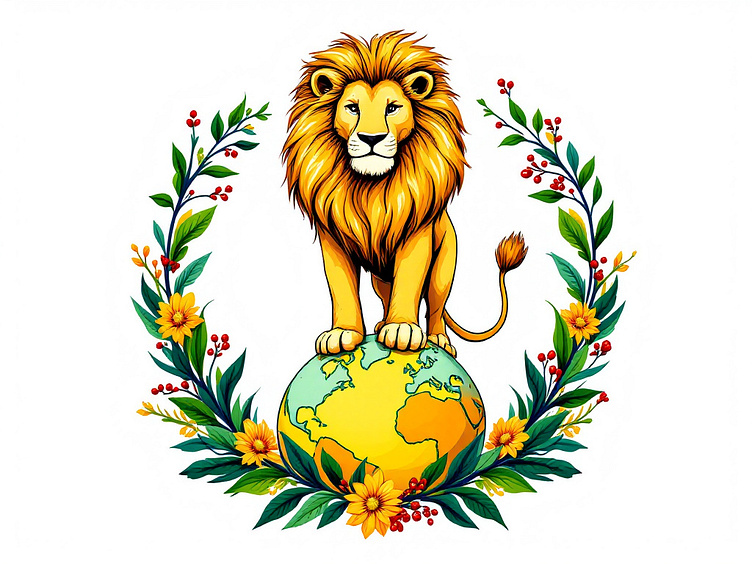Animal Kingdom LoGo
The Animal Kingdom: A Fascinating World of Diversity
The Animal Kingdom is one of the most diverse and intriguing classifications in the biological hierarchy, encompassing millions of species that inhabit the earth. From the tiniest microscopic organisms to the largest creatures that roam land and sea, the animal kingdom showcases an incredible variety of life forms, each playing a unique role in maintaining the balance of ecosystems. This article delves into the structure, classification, and fascinating aspects of the animal kingdom.
What is the Animal Kingdom?
The Animal Kingdom, or Kingdom Animalia, is one of the major biological kingdoms in the taxonomy of living organisms. It comprises multicellular, eukaryotic organisms that are predominantly heterotrophic, meaning they rely on other organisms for food. Animals exhibit varying levels of complexity, mobility, and adaptation, allowing them to thrive in diverse habitats, including land, water, and air.
Characteristics of the Animal Kingdom
Animals share some common characteristics that differentiate them from other kingdoms, such as plants or fungi.
Multicellular Structure
Animals are made up of multiple cells that are specialized for various functions, such as digestion, respiration, and reproduction.
Eukaryotic Cells
They have well-defined nuclei and organelles, making their cellular structure more advanced than prokaryotes like bacteria.
Heterotrophic Nutrition
Animals cannot produce their food like plants. Instead, they depend on consuming plants, other animals, or organic matter for sustenance.
Mobility
Most animals are capable of movement, either through limbs, fins, wings, or other structures, enabling them to escape predators, hunt, or migrate.
Reproduction
Animals reproduce sexually or asexually, with the majority following a sexual mode of reproduction involving male and female gametes.
Growth and Development
Animals undergo various stages of development, often starting from an embryo that grows into an adult form through processes like metamorphosis.
Classification of the Animal Kingdom
The animal kingdom is divided into two broad groups: Invertebrates and Vertebrates.
1. Invertebrates
Invertebrates are animals that lack a backbone or vertebral column. They make up the majority of animal species and include creatures of various shapes and sizes.
Examples: Insects, mollusks, arachnids, crustaceans, and worms.
Key Features of Invertebrates:
Simple body structure compared to vertebrates.
Often have exoskeletons for protection.
Found in diverse habitats, from deep oceans to dense forests.
2. Vertebrates
Vertebrates are animals with a backbone or spinal column. They belong to the subphylum Chordata and are generally more complex in structure and function.
Examples: Mammals, birds, reptiles, amphibians, and fish.
Key Features of Vertebrates:
Endoskeleton made of bone or cartilage.
Advanced nervous and circulatory systems.
High adaptability to various environmental conditions.
Major Phyla of the Animal Kingdom
The animal kingdom is further classified into various phyla based on their structural and functional characteristics. Below are some of the major phyla:
Porifera (Sponges)
Simplest animals, primarily aquatic, with porous bodies.
Cnidaria (Jellyfish, Corals)
Aquatic animals with radial symmetry and stinging cells called nematocysts.
Platyhelminthes (Flatworms)
Simple, unsegmented worms with bilateral symmetry.
Annelida (Segmented Worms)
Worms with segmented bodies, like earthworms and leeches.
Arthropoda (Insects, Crustaceans, Arachnids)
Largest phylum, characterized by exoskeletons and jointed appendages.
Mollusca (Snails, Octopuses)
Soft-bodied animals, often with shells, found in aquatic and terrestrial habitats.
Echinodermata (Starfish, Sea Urchins)
Marine animals with radial symmetry and a water vascular system.
Chordata (Vertebrates)
Animals with a notochord, dorsal nerve cord, and post-anal tail at some stage of development.
Fascinating Facts About the Animal Kingdom
Biodiversity
Scientists estimate that there are about 8.7 million species of animals on Earth, though only a fraction has been discovered and documented.
Adaptations
Animals have evolved incredible adaptations to survive. For example, camels store fat in their humps for energy in deserts, and arctic foxes have thick fur to withstand freezing temperatures.
Behavior
Animals exhibit fascinating behaviors, from the migratory journeys of monarch butterflies to the social structures of ants and elephants.
Communication
Animals use various forms of communication, including sounds, chemical signals, and body language, to interact with their surroundings and one another.
Keystone Species
Some animals, like bees and wolves, play a crucial role in their ecosystems. Removing them can disrupt entire ecosystems.
Importance of the Animal Kingdom
Ecological Balance
Animals help maintain ecosystems by participating in food chains and nutrient cycles.
Pollination and Seed Dispersal
Many animals, such as bees and birds, aid in pollinating plants and dispersing seeds, ensuring the growth of vegetation.
Economic Value
Animals contribute to industries like agriculture, dairy, fisheries, and tourism.
Companionship
Domestic animals provide companionship and emotional support to humans.
Scientific Research
Animals are vital for studying genetics, medicine, and behavioral sciences.
Threats to the Animal Kingdom
Despite their importance, animals face numerous threats due to human activities, including:
Habitat Destruction
Deforestation, urbanization, and agriculture lead to the loss of natural habitats.
Climate Change
Rising temperatures and changing weather patterns disrupt animal habitats and food sources.
Pollution
Contamination of air, water, and soil harms countless species.
Poaching and Hunting
Illegal hunting and poaching for fur, ivory, and other animal products threaten many species.
Invasive Species
Non-native species introduced to ecosystems can outcompete or prey on native species.
Conclusion
The animal kingdom is a testament to nature's creativity and adaptability. From the tiniest insects to majestic whales, animals enrich our world with their diversity and vitality. As stewards of this planet, it is our responsibility to protect and preserve the animal kingdom for future generations. By understanding and appreciating the role animals play in ecosystems, we can ensure their survival and, ultimately, the survival of life on Earth.
